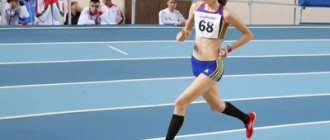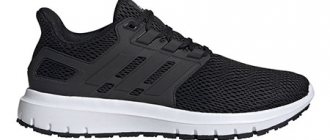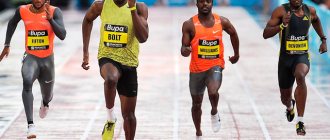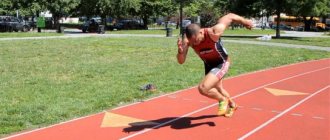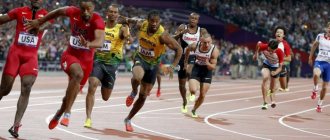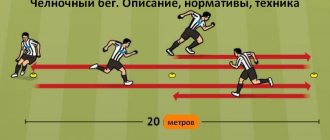How to learn to run for a long time and how to prepare for it? Answered by an ultramarathon runner and running coach.
How long is it? For a professional, 10 km is nothing, for an amateur it is the norm, and for someone who has never run, it is the ultimate dream. In fact, everyone can do this distance if you approach it gradually. And in general, running training is better measured not by distance, but by time.
Alexander Elkonin
founder and coach of the ERA club - Elkonin Running Addicts
Compete with yourself, not with others.
How to overcome fear of long distances?
According to the ultramarathoner, to reach long distances, you need to start with 20-30 minutes of running. Alternate running with walking in a ratio that is comfortable for you and increase the duration of the load by 7-10% per week. In this case, in 2.5-3 months you will be able to reach an hour of continuous movement, and this is already very close to the cherished 10 km.
For those who are constrained by psychological fear of the length of the distance, there is a useful life hack: do not set yourself the goal of running an entire marathon. Run to the nearest traffic light, then catch your eye on the next one and run to it. Concentrate only on the small segment that you are running here and now.
Photo: unsplash.com/@areksan
What you need for training
For training you must have:
- comfortable sports suit that wicks away moisture well;
- running (namely running) sneakers;
- compact bottle for water and isotonic solution;
- a hat if you run outside;
- towel.
I will briefly go over these points.
Running on asphalt is not the best option
Choose sportswear that does not restrict movement.
Running shoes are extremely important, especially if you'll be running outside on asphalt. Cushioned running shoes will protect your joints - ankles and kneecaps from impacts and possible injuries while running.
Water is essential when running at any distance. I also recommend purchasing an isotonic solution. They are sold in powder or ready-made in sports nutrition stores. Such solutions contain glucose, potassium, sodium and some other mineral components to maintain water balance in the body during exhausting exercise.
If you run in the summer, don't neglect your hat. Sunstroke is not what you need.
Is it possible for beginners to run long distances straight away?
Not everyone can get off the couch and immediately run 10 km – and that’s normal. For example, healthy young people without excess weight will be able to cover this distance in one run. But this does not apply to those who suffer from excess body weight, heart disease, hypertension or joint problems. It is important for such people to carefully dose their running loads so as not to harm their health. In general, you shouldn’t look at the professionals and think that you will never succeed. It is quite possible that they started running a long time ago and were also not able to cover a long distance the first time.
Why don't marathon runners run the marathon distance when training for a marathon?
How to add variety to your treadmill run
Where to begin
Aerobic exercise should be progressive. I'll tell you how I did it.
- I started the first 3 workouts with a modest distance of two kilometers.
If you are at the stadium, then the most convenient option is the following - we run one lap at a moderate pace, jogging, at a speed of about 7-8 km per hour. We walk the second lap at an average pace. And so on up to two kilometers.
In my example, at my stadium the circle was 300 meters. If you have a large stadium, then divide the circle in half - half running, half walking.
- In total, for the first 3 workouts we run 1 km and walk the same amount.
- The next two workouts – we increase the distance and try to walk less. For example, we run 600 meters, walk 300. And so on five times.
- Starting from the tenth workout, you can start running without stopping for a distance of up to 5 km. Again, gradually increasing the “non-stop” distance. First 2 km, then 3.4 and finally 5 km.
- Gradually increase your speed. It is advisable to run 5 km without stopping by the end of the first month of training, within 35-40 minutes. Average speed is 7.5-8.5 km/h. Which is equivalent to jogging. It is quite easy and realistic to maintain such a pace at such a distance.
In subsequent articles I will post a sample training schedule with a more detailed description of the process and progress.
How long does it take to develop the habit of running for a long time?
Everyone has their own pace of adaptation to stress, but usually 4-6 months of regular training is enough for running to become an integral and familiar part of life. The problem is different: how not to quit after a couple of weeks or months? The ultramarathoner notes that the easiest way is to run in a group - not necessarily in a running club, a virtual community is enough. Understanding that your brothers in mind are running somewhere motivates you not to give up training.
Alexander:
Our running club ERA has a joke about the three stages of a runner. The first is when a person starts eating special gels instead of bananas while running. The second is when he lacks the running app on his phone and buys himself a special watch with a GPS sensor. And the third is when he changes his name on Instagram from vasya_Ivanov to ultrarunner_Vasya. We know of cases where this journey took only a year.
Photo: unsplash.com/@hocza
Do's and Don'ts
Some useful tips for more effective and safe training:
- Try to run in the morning. Especially if you run in the summer and it's hot outside. In the morning the body is full of strength and rested. Evening workouts after work will be less effective.
- Do not run under the scorching sun - it is dangerous. The body is already losing moisture, there is no need to increase the effect and overheat.
- Do not run on an empty stomach or on a full stomach. Ideally, eat a light breakfast and start jogging an hour and a half after breakfast.
- Warm up before training - a little stretching, a few squats, circular foot rotations - all this will warm up your joints and protect you from injury. A five-minute warm-up is quite enough.
- Don't run at high speed right away. Light jogging is an additional warm-up. Gradually increase the pace.
- Watch your breathing. If your breathing becomes difficult, slow down.
- Run lightly and do not hit the ground with your feet as hard as you can to avoid injury.
- Do not stop immediately after completing the distance traveled. As soon as you have run the required distance, reduce the pace and gradually switch first to a fast step, then to a slow one. A sudden stop is fraught with a sharp decrease in pressure. Which in turn can lead to lightheadedness or fainting. Take care of your heart. Allow your circulatory system to stabilize pressure.
These simple tips will help you start your running training comfortably and safely.
If you don't have time to run outside, you can jump rope.
A whole series of articles will be devoted to running. In this article, I covered only the basic principles of training at the initial stage and basic precautions. Good luck with your races.
How to learn to run for a long time?
Before answering this question, it is important to understand what limits you when it comes to running.
- If the problem is that you are out of breath or get tired quickly, then most likely you lack general endurance. All this can be developed with the help of long (relative to your current state) slow running.
- To run for a long time, you need to gradually increase the duration of the load.
- Regular training is also important – ideally 4-6 per week. While running, you can focus on your thoughts or listen to music, an audiobook, or foreign language lessons. Think of running as a kind of meditation.
- There is also a psychological factor - many, for example, are simply bored of running for a long time. To solve this problem, think of running time as a time when you can isolate yourself from the outside world. There is an interesting film on this topic, “The Loneliness of the Long Distance Runner,” where the main character reveals running to the viewer as a means by which one can escape from one’s problems.
Why can't you breathe only through your nose while jogging?
Alexander
: It is usually very difficult for a beginner to force himself to go for a run several times a week. He perceives even 2-3 workouts a week as a feat. This is due to the fact that running is still somewhere in 10th place in his system of life priorities, between reading a book and going to the cinema. But later, after a few years of regular training, running will become a necessity and as integral a part of your daily routine as an evening TV series or scrolling through Instagram.
Improving mid-distance running technique, running 500-1000 meters
The 500 meter race is not an Olympic distance. This distance is also not run at world championships. In addition, no world records are recorded in the 500-meter race. Schoolchildren and students pass the 500 m running standard in educational institutions.
500 meter running tactics
Running 500 meters can be classified as a sprint. Since it is believed that the longest sprint is 400 meters, and 600 and 800 are already middle distances, then judging by the pace and tactics of running, 500 meters can be called a sprint.
Therefore, the tactics of running 500 meters are no different from the tactics of running 400 meters. During a long sprint, it is very important not to “sit down” at the finish line.
For the first 30-50 meters, you do a powerful acceleration to gain starting speed. After a sharp increase in speed, try to maintain it, or, if you realize that you started too quickly, then slow down the pace quite a bit. The finishing acceleration must begin 150-200 meters before the finish. Most often, at the finish line of 100 meters, the legs become a “stake” and it is difficult to move them. Running speed drops significantly. This is caused by the buildup of lactic acid in the muscles. Unfortunately, there is no way to completely get rid of it, and the legs become clogged in athletes of any rank. But to reduce this effect and make the finish faster, you need to train regularly.
Tips for running the 500 meters
500 meters is a very fast distance, so you need to spend a lot of time warming up. Well-warmed muscles will be able to show your best possible results. Read the article about what exactly a warm-up should be like: warm-up before training.
Run in shorts. It’s not uncommon for short-distance tests in schools and universities to be taken in sweatpants. This is not recommended, as they restrict movement and reduce running speed. And since runners usually have long strides in the 500 meter, sweatpants will greatly interfere with their running.
At the finish line, use your arms more often to run faster. The legs no longer obey, but they will try to move at the same frequency as the arms, so, despite the fact that there will be no synchronization, speed up the movement of the arms at the finish line after 50 meters.
Choose shoes with shock-absorbing surfaces. Do not run in sneakers that have thin and flat soles.
General principles of 1000 meters running
This distance is considered difficult precisely because here, with high speed requirements, endurance and special training of the legs, pelvis and gluteal region are required. A soft and free pelvis (as the trainers put it) can be pushed forward as desired, and this significantly affects the performance of the competition.
Simultaneous training of long-term endurance running and 1000 m running temporarily develops qualities such as cardio endurance and speed in athletes, and also develops the skills of explosive leg strength, and is the basic stage in developing strength indicators and fighting qualities of an athlete.
In addition to the direct training process, when developing middle-distance running skills, additional factors should be taken into account and improved:
· General physical training: it needs to be done separately from special running training, since a high level of physical fitness of an athlete is the key to his success in sports competitions
· Stretching: flexibility and stride length are important properties, both for competitions and for the general physical condition of the body
· Breathing: correct breathing ensures running rhythm, intensive supply of oxygen to the body, and reduces fatigue
· Warm-up: The ability to thoroughly develop muscles, joints and tendons can significantly reduce, if not avoid, injuries during training and competition.
Technique for running 1000 meters
Its basis is the short-distance running technique, to which certain elements are added. Consists of three standard steps:
· Start and starting acceleration
· Distance running
Finishing
Start
Either a high start or a one-handed start is used. With a high start, the runner on command takes a place at the starting line, placing the toe of the starting foot close to the line; the swing leg is set back at a distance of two feet; legs bent at the knees. The body is tilted forward at an angle of 45 degrees, the weight of the body falls on the pushing leg; the gaze is directed downward, to a point a meter from the starting line, but the head is not lowered, but parallel to the body. Arms bent at the elbows; the hand opposite the push leg is in front, the fingers almost touch the bent knee; the second arm is freely laid back and almost straightened. When receiving the “March” command, the athlete starts without straightening the body; in five to six accelerating steps, the torso straightens, maintaining a tilt of 5 degrees forward, and the runner moves on to the next stage of running.
When starting with support on the ground, the starting leg is set at a distance of two feet from the starting line, the swing leg two feet behind it; legs are bent at the knees, the body is strongly tilted forward; the hand opposite the push hand goes down and rests on the ground, as with a low start, the second hand is bent at the elbow and pulled back. The runner starts in the same way as from a low start; During the starting run of eight running steps, the torso straightens and the athlete proceeds to the stage of running along the distance.
Distance running
Races of this type are usually held on a common track, so from the first steps it is necessary to solve tactical issues and try to take the right position in the group of runners, avoiding blocking and being pushed to the left edge of the track. The technique of running 1000 m when covering the distance requires shortening the step length, for which the take-off is as powerful as in short-distance running, and the thigh of the swing leg, on the contrary, rises to a smaller height and the support phase is lengthened. It is necessary to carefully monitor the condition of the muscles of the shoulders and neck - they should be relaxed, which allows for relative rest in certain phases of running.
Finishing
Of particular importance during the finishing stretch is the athlete’s ability to resist fatigue and the ability to gather all his strength for the finishing push. In the last 200 meters, it is necessary to use a finishing spurt, including in order to break away from the main group of runners and have the opportunity to choose the desired type of finishing: throw, run over, finish sideways. Although a finishing throw at a distance of 1000 m is recommended only in case of intense competition for the result of the race; This method at medium and long distances, given the athlete’s fatigue, can lead to falls and injuries.
After the finish, you cannot stop, you should slow down your running speed, take a step for about 20 meters, lower your arms down and all this time breathe deeply with a strong exhalation.
Breath
Proper breathing is especially important in middle and long distance running. By changing the rhythm of inhalation and exhalation, moving from chest breathing to belly breathing, athletes change the rhythm of their running and affect the oxygen supply to the body, and, therefore, their endurance. Correct breathing rhythm: inhale for every 3 steps and exhale for every 3 steps. Every 200 meters you should take 3 deep breaths in and out with your stomach. At the start, the runner breathes deeply and slowly, during the acceleration stages more often, shallowly, with his mouth half open. In general, you cannot breathe only through your nose during competitions.
1000m running tactics
Conventionally, it can be divided into three parts.
· Starting acceleration. For the first 50 meters of the distance, a runner can and should use his speed characteristics and try to accelerate his body as much as possible from zero speed. Experts believe that at this stage, even with such loads, the athlete will not lose strength, but will have the opportunity to take a comfortable place in the group, avoid blocking and being pushed to the left edge, and make a small margin relative to his opponents. After accelerating, the pace must be slowed down in accordance with the individual qualities of the runner, but the deceleration should be gradual.
· Distance. Having adopted the most suitable running pace after acceleration, the athlete must try to maintain it until the very finish line, while maintaining a balance between speed and energy consumption.
· Finish acceleration. 200 meters before the end of the distance, the speed must be increased, so that 100 meters before the finish line, you move on to the finishing spurt, during which you should give all your best.
Warm-up before the start
Let's briefly look at the warm-up that precedes the competitive race. It plays a vital role in warming up the body.
Optimal time
It is best to start warming up 50 minutes before the start. This will allow you to complete all the necessary exercises + rest before the race.
Warm-up
Before exercise, jog for 7-8 minutes (at a very slow pace).
Warm-up should definitely include dynamic stretching. Here is an acceptable list of exercises: bending with hands reaching the floor (knees straight), bending to each leg, lunging forward, rotating joints (knees, hips, shins, shoulders, neck).
SBU
The 3 km running technique requires performing standard running exercises:
- Light jumps up;
- High hip raise;
- Running on straight legs;
- Added steps;
- Accelerate 30 meters + back in steps. About 4 approaches.
Cloth
It is important that the body remains warm after warming up. In summer, all conditions are naturally created for this. In winter, take care of a warm tracksuit.
Consider taking a day off
Conley answers the rest day question confidently: 6 days before a 5K or 10K race, she just sits back. “I'm just taking a day off,” she says.
For most runners, this is nothing special - everyone has a rest day every 7 days. However, for a professional, this is a noticeable pause, during which you can do a “full reset,” regroup and refocus on your work.” The pause allows my body to fully digest the previous training, fully rest and then “wake up” in advance of the race so that I don’t feel sluggish at the start,” comments Conley.
During the eyeliner, it does not reduce the training volume too much, by about 25%. For example, if she usually runs about 40 km 3 days before speed training, then 3 days before the race her volume is 30 km. But it's a plan that works for her. The eyeliner plan that's right for you may vary - unfortunately, there are no universal recipes.
"Every body reacts a little differently," Hunt says. Mike Caldwell, trainer at Asics Greenville Track Club-Elite, agrees: “As with many things, the response to the taper varies among athletes. Some people respond to traditional eyeliner, while others don’t.”
Stay cheerful
However, reducing the load does not mean that you need to completely switch to jogging. Eyeliner implies maintaining tone in all types of training, even if there is more rest.
In practice, this means that about every 3 days you need to do some kind of “acute” training for the aerobic system, and about once every 4 days for the anaerobic system.
Aerobic training can be in the form of several intervals at 5K pace or tempo work.
Anaerobic work requires more precision, but a few bursts of 150, 200 or even 400 meters at the end of a (short) aerobic workout can be very effective. The main thing is that they should not be too many, and they should be performed with enough rest so that you have time to fully recover by race day.
Professional approach
How to run 1 km without training? Follow these guidelines:
- Back - make sure it is level.
- Feet - each new step occurs in such a way that the person touches the sole at the level of the center of gravity. Contact with the coating occurs using the rolling method: from heel to toe.
- Legs - the stride span should be maximum. So, they achieve the required acceleration using the laws of physics. At the base, the calf muscles act as springs. If you follow natural movements, you can easily select a running pace at which only horizontal acceleration is applied. The rest of the movements are carried out automatically.
- Hands - it is recommended to place them at an angle of 90 degrees, moving them only at the shoulder joint.
The body is slightly tilted before starting the movement. A person feels how he wants to move forward. After following each point, it is easy for even an inexperienced athlete to understand how to easily run 1 km without preparation.
What are the subtleties in nutrition?
The ratio of proteins, fats and carbohydrates in a sprinter’s diet is as follows:
- in the off-season – 20-20-60;
- at the preparation stage – 25-20-55;
- in season – 30-15-55.
During exercise that lasts more than 10 minutes, the aerobic mechanism becomes the main source of energy, so athletes are recommended to drink sports cocktails during training. You need to select something that will help the athlete explode at the start and maintain the desired pace subsequently.
For sprinters, it is important to provide maximum power for a short period of time, therefore, adequate protein intake is necessary.
With prolonged exercise, the body becomes dehydrated, which means mineral salts are washed out of it. Mineral reserves must be constantly replenished. It is also important to take vitamin C, which removes free radicals formed during significant aerobic exercise. Thus, it is necessary to select the optimal multivitamin-mineral complex for continuous use.
Creatine is a product that increases endurance; carbohydrate drinks and other products that have increased biological value are also useful.
Important! It is recommended to use sports nutrition on the advice of a trainer; it should be taken regularly along with the main diet.
Breathing technique
To understand how to quickly run 1 km without preparation, it is not enough to follow the listed rules of natural running. Without proper breathing, all efforts will be in vain. Here are the main points of the inhalation/exhalation sequence.
During movement, the mouth and nose work together. Breathing occurs simultaneously through both natural openings. The pace of inhalation and exhalation is intense from the first seconds of movement. It is this approach that helps prevent oxygen deprivation from strength training. It is not recommended to select the frequency of contractions of the lungs; you need to give the body the opportunity to choose it naturally.
Principles of Endurance
Not everyone understands how to quickly run 1 km without preparation and not get tired. At the start, they begin to quickly accelerate, giving all their best, which leads to shortness of breath and loss of strength. Professional athletes recommend gaining maximum speed at the start, the dash lasts no further than 100 meters, then slowing down.
A quick start makes the task easier for the runner; such a maneuver helps to stay in the flow of the mass race. After all, it is easier to overcome distances when there are few opponents ahead. Overtaking rivals in front occurs smoothly, without sudden acceleration.
Before the finish line, 300 meters away, you can speed up a little. However, you need to pay attention to your remaining strength so as not to fall a few seconds before the end line. How to run 1 km without training? This becomes more clear when you try to test your capabilities against time every day. Morning workouts help you understand what your body is capable of and make timely adjustments before the big day.
Top sprinters
If we take the fastest finishes in history, then the undeniable championship here belongs to athletes from the USA. However, the world record and “silver” time are held by Jamaican athletes - Usain Bolt and Yohan Blake (19.26). The slowest time in the list of the 25 fastest sprinters is 19.80 seconds.
There are no domestic athletes on this list, because the Russian record, as we remember, is 20.23 seconds.
But among women, there was a place on the authoritative list for the Russian runner Irina Privalova. Her Russian record of 21.87 seconds is the 21st time in history.
Interestingly, the vast majority of women's best performances were recorded in the last century, and it is rare that any of our contemporaries can run at the same level. Only in 2015, the Dutch athlete Daphne Schippers managed to reach the third world time (21.63).
Requirements for an athlete for a distance of 200 meters
The 200m sprint places high demands on the athlete. In order to reach maximum speed as soon as possible from the start, and then maintain it for at least most of the distance, the runner must be well prepared physically, have strength and good coordination .
To perform successfully, the athlete must have a height of 165-195 cm, the optimal height is 175 cm.
The ideal weight for a sprinter is considered to be height minus 102 kg. If an athlete’s height is 180 cm, then his weight should be 78 kg. In this case, there should be no fat pad, only dry muscles. In addition, the athlete must have a good metabolism. It must be able to spend and save glycogen.
The stronger the athlete, the higher his running speed . A sprinter must perform a chest press of 130 kg, a squat of 230 kg, and a leg press of 460 kg. The sprinter must deadlift with a load of 210 kg. These are ideal indicators.
Standards for women
And here you can familiarize yourself with the standards for other athletics disciplines: Table of ranks and standards for running
Now that you know everything about the two-hundred-meter race, we invite you to read other articles from our athletics selection: Sprint running and its features, running 100 m, 400 m, 800 m, 1500 m, 3000 m.

